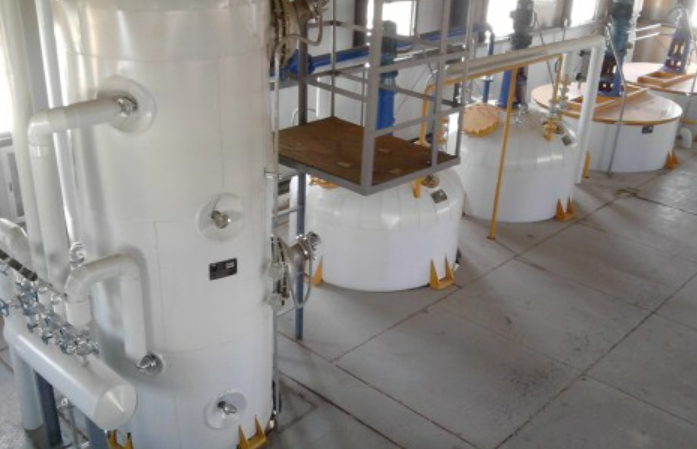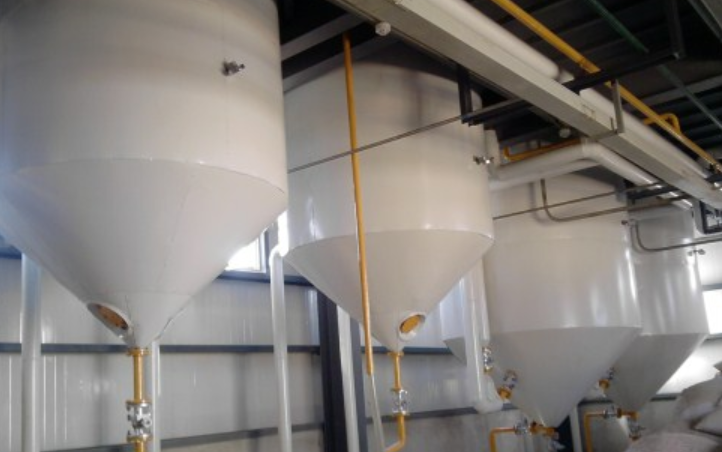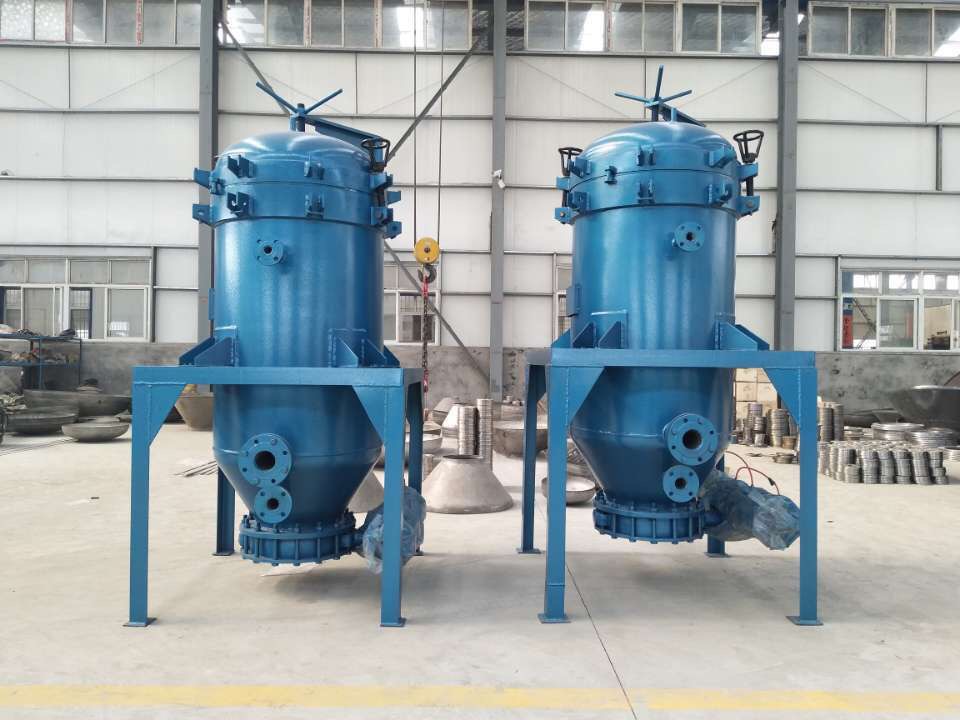Edible oil semi-continuous refining equipment is a new type of oil refining equipment, which has the characteristics of reliable performance, high degree of mechanization, and excellent process technology. It combines the advantages of batch refining process and full continuous refining process. Semi-continuous refining is carried out in stages: the degumming section, deacidification section and decolorization section all adopt intermittent treatment methods to remove water-soluble and insoluble gums in crude oil, as well as FFA (free fatty acids) and others in oils. Impurities, chlorophyll, carotene, flavonoid pigments, anthocyanins and decomposition products of certain sugars and proteins in oils and fats will also be removed; deacidification and deodorization processes use continuous production deodorization towers to remove odorous substances and parts in oils and fats FFA, both intermittent and continuous production can be realized in the same refining process.

1. Main features of edible oil semi-continuous refining equipment:
(1) Processing capacity: 30/35/40/45/50 tons/day
(2) Refining process: chemical refining + physical refining
(3) Scope of application: it can be used to treat peanut oil, rapeseed oil, tea seed oil, soybean oil, sunflower oil, flax oil, walnut oil, sesame oil, palm oil, palm kernel oil, etc.
(4) Main equipment: degumming pot, deacidifying pot, decolorizing pot, soap stock pot, hot water tank, lye tank, lye pump, decolorizing oil tank, decolorizing oil pump, vibration filter, filter plate washing tank, air compressor , Decolorizing water jet vacuum pump, plate heater, heat transfer oil heater, deodorizing tower, deodorizing oil pump, product oil storage tank, product oil pump, etc.

2. Edible oil semi-continuous refining process:
Wool edible oil-degumming-deacidification-decolorization-deodorization-refined edible oil
(1) Degumming section
In the semi-continuous refining process of edible oil, degumming is still carried out in the refining tank (degumming tank). The more commonly used degumming process is hydration degumming. Hydration degumming is a method of oil degumming that utilizes the hydrophilicity of peptic impurities such as phospholipids. Hot water is added to hot crude oil under stirring to make the peptic impurities agglomerate by absorbing water and then sedimentation and separation. In the process of hydration and degumming, the main substances that can be aggregated and settled are phospholipids, as well as proteins combined with phospholipids, glycosyl diglycerides, mucus and trace metal ions.
(2) Deacidification section
Like the edible oil degumming section, the edible oil deacidification part is also carried out in the refining tank (deacidification tank). Usually, lye is added to the degummed oil to make the lye react with FFA. FFA precipitates in the form of soapstock, some impurities are also adsorbed by soapstock, and soapstock is separated by precipitation and washing. This is a deacidification method commonly used in the oil refining process, which is called chemical deacidification, also called alkali refining deacidification.
(3) Decolorization section
In the semi-continuous edible oil refining process, in addition to the degumming and deacidification sections, the oil decolorization also adopts an intermittent refining method, which is carried out in a decolorizing tank and mainly removes the pigment in the edible oil. The pigment composition in edible oil is complex, mainly including chlorophyll, carotene, flavonoid pigment, anthocyanin, and decomposition products of certain sugars and proteins. Grease decolorization is commonly used by adsorption decolorization method, using a strong adsorbent to remove pigments and other impurities in the hot oil, so as to achieve the purpose of decolorization and purification.
(4) Deodorization section
In the semi-continuous refining process of edible oil, the oil deodorization is carried out in the deodorization tower. Oil deodorization is a process that uses the difference between the volatility (vapor pressure) of the odorous components in the fat and the triglycerides to remove odorous substances by steam distillation under high temperature and vacuum conditions. Oil deodorization can not only remove the odorous substances in the oil, speed up the smoke point of the oil, change the flavor of the edible oil, but also change the stability, color and quality of the oil. While deodorizing, it can also remove free fatty acids, peroxides and some heat-sensitive pigments, remove the volatile decomposition products of proteins in moldy oils, remove small molecular weight polycyclic aromatic hydrocarbons and residual pesticides, and reduce them to a safe level. , In line with national food standards.

3. Advantages of edible oil semi-continuous refining equipment:
(1) One machine can be used for multiple purposes. It can be used to produce international first- and second-class oil, as well as high-grade cooking oil and salad oil.
(2) Wide application range, can be used to treat peanut oil, rapeseed oil, tea seed oil, soybean oil, sunflower oil, flax oil, walnut oil, sesame oil, palm oil, palm kernel oil, etc.
(3) The clay and oil are mixed in a vacuum state during decolorization, which avoids the influence of air, makes the utilization rate of clay high, and consumes less clay under the same decolorization effect.
(4) It overcomes the disadvantages of high price of continuous refining equipment, complicated operation, high maintenance cost, and high start-up cost.
(5) High oil refining rate, low loss, and high quality oil.
(6) The grease processed by the edible oil semi-continuous refining equipment has a transparent color, no precipitation after long-term storage, no foam or oil fume in the pot, and can meet the national edible oil standard and can be directly filled and sold.
At present, there are 3 different types of edible oil refining equipment on the market, namely batch, semi-continuous and fully continuous. These three types of refining equipment have their own characteristics, and users can choose edible oil refining equipment according to their own processing capacity and requirements for the refining process. If you have any questions during the purchase process, please feel free to call Henan Zhongxing. Zhongxing's edible oil refining equipment engineers are willing to provide you with purchase instructions.
Copyright © Henan Zhongxing Grain And Oil Machinery Co.,Ltd. All Rights Reserved. Powered by MetInfo